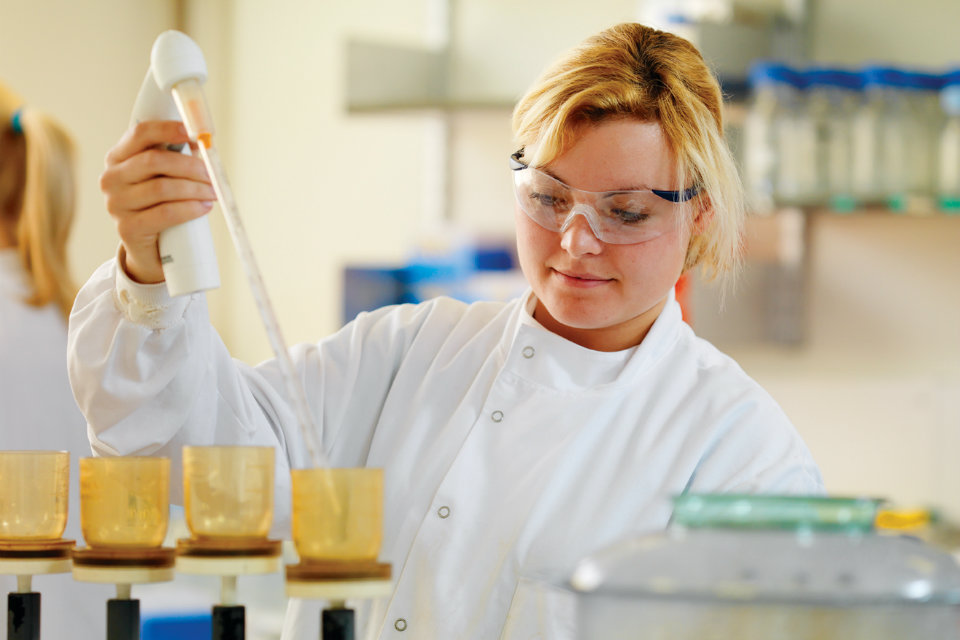Tough action to protect England’s beaches and £3.6bn seaside economy
Final year before bathing waters have to meet new water quality standards which are twice as strict.

Deck chair on beach
As families flock to the seaside this bank holiday weekend, the Environment Agency has started its annual water quality tests at England’s beaches.
Over 400 beaches and inland bathing sites are tested every week between May and September. Improvements this year will help more beaches to pass new water quality standards.
Next year England will have water quality targets that are almost twice as stringent, but thanks to work over two decades to prevent pollution ending up in the sea, 9 out of 10 English beaches are already meeting the standard.
But while over 90 percent are predicted to pass, around 40 beaches along the English coast are currently at risk of failure. The new EU law means that local authorities would need to display a sign advising against swimming for those that do not pass the new standard.
Bathing water quality has improved dramatically over the last two decades as pollution has been tackled. But some pollution still remains, due to agriculture, sewage overflows, animal and bird faeces at beaches and households and businesses with badly connected drainage.
In some areas of the country as many as 1 in 5 homes have their drains misconnected, meaning sewage is unintentionally being flushed into rivers and ending up on beaches. Water companies, local authorities and the Environment Agency are working to repair misconnected drains.
Paul Hickey, Deputy Director of Water Quality at the Environment Agency said:
The seaside economy in England is worth around £3.6 bn each year – and every improvement in bathing water quality helps to protect that. With one year to go until the new EU standards come into effect, the Environment Agency and partner organisations are focusing efforts on the small number of problem sites to bring them up to standard.
Meeting tough new water quality targets has been a huge challenge, and local authorities, water companies, farmers, homeowners and businesses all have important parts to play in protecting and improving bathing water quality at the remaining beaches that are not yet up to scratch.
Environment Agency water quality sampling teams will be out taking a total of 8,400 samples at over 400 bathing sites between now and September. Information on bathing water quality is available online on the Bathing Water Data Explorer and includes a pollution forecasting system for bathing waters, which predicts risk to bathing water quality daily during the bathing season, allowing the public to make more informed decisions about where to swim. A freely available mobile phone app called Beach Selecta allows access to bathing water information on the move.
The Environment Agency’s role is to improve water quality, it works with local authorities, industry, farmers and water companies to take action to reduce pollution.

Bathing water tests at Starcross Labs in Exeter
Information on bathing water quality
The top 5 sources of pollution to bathing waters
Runoff from agricultural land where manure from farmed animals gets washed into rivers and streams and then into a bathing water.
We are working with the agriculture sector to find the best ways to reduce pollution from agricultural areas. Because the pollution sources are spread out it is very difficult to control but the farming community is helping to reduce pollution through voluntary measures.
Runoff from urban areas can carry animal and bird faeces through surface water drains to bathing waters.
Urban runoff will be better controlled in the future through the use of sustainable urban drainage systems which will slow down the flow and allow time for the water to be purified through natural processes. These systems will be applied to new build and in some cases to existing developments.
Wrongly connected sewers from homes and businesses can discharge to surface water drains putting raw sewage into the surface drainage system and potentially into bathing waters.
We are working with local authorities and water companies to reduce the numbers of misconnections but they are very difficult to locate so we are also working in partnerships to educate the public and the plumbing industry to reduce the number of new wrong connections being made.
Animal and birds can be a significant source of pollution at certain sites
Local authorities should be aware of the effect that animals can have on bathing waters applying appropriate controls and working with dog and other animal owners to protect bathing water quality. People must be aware of the effects that animals and birds can have on our bathing waters. Wild birds such as seagulls and pigeons can badly affect water quality so controls must be put in place where this is a problem. The public should not feed wild birds at bathing waters and keeping food litter to a minimum is important. Dog owners should act responsibly and ensure that they abide by dog controls and clean up after their dogs.
Sewage from sewage treatment works and storm discharges.
We are continuing our work with water companies to improve the treatment and handling of sewage and drainage from our homes and businesses. One aspect of this is the fitting of monitors to combined storm sewage overflows (CSO) which will gather data on how often they discharge. Surfers Against Sewage have a CSO alert system, which they have organised in partnership with water companies, that alerts the user when a discharge is taking place at a particular beach. This is available on www.sas.org.uk/map/ .